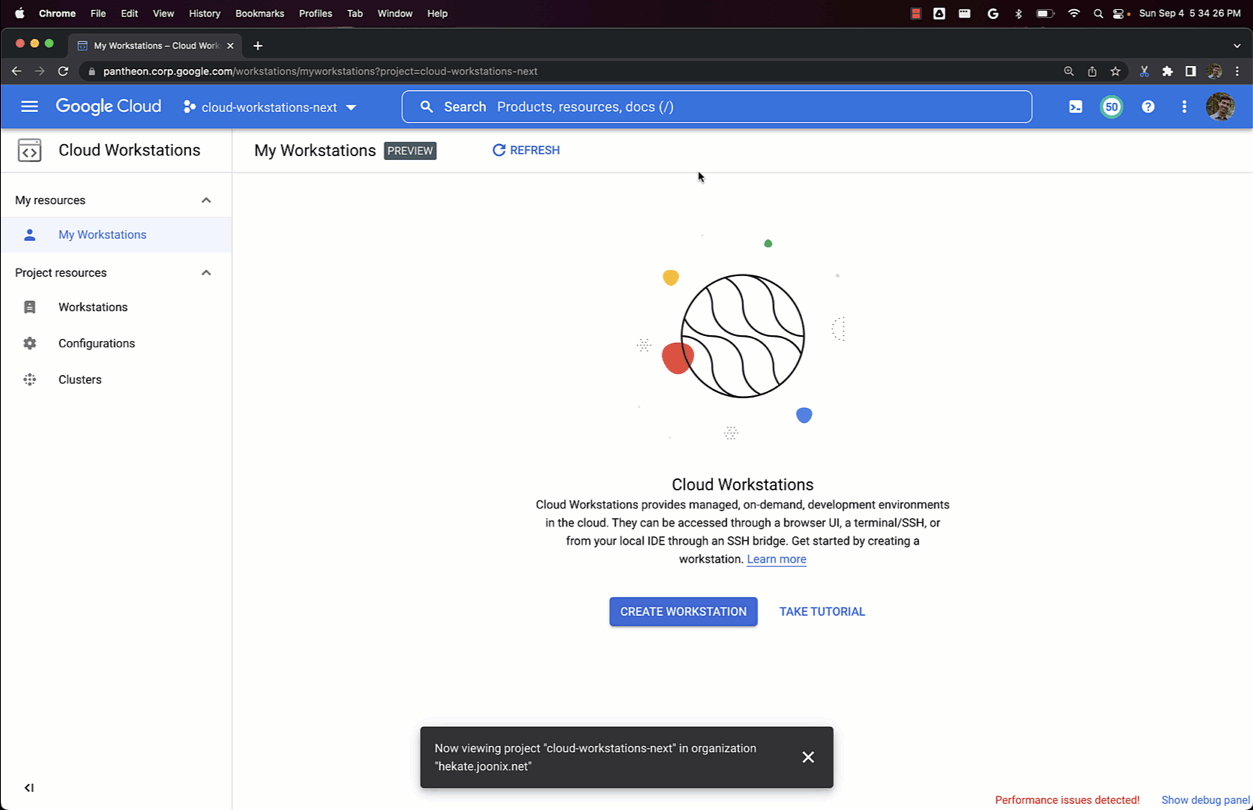
MMS • Steef-Jan Wiggers
Article originally posted on InfoQ. Visit InfoQ
Google introduced the public preview of Cloud Workstations during its Cloud Next event, which provides fully-managed and integrated development environments on the Google Cloud Platform.
Brain Dorsey, a developer advocate at Google, explains in a Google Cloud Tech video what Cloud Workstations are exactly:
It is a web application hosted in the cloud console to create and manage container images, which are then used as templates to create development environments that run on a dedicated VM for each developer.
Google Workstation addresses two personas according to the company: developers and administrators. Developers can quickly access a secure, fast, and customizable development environment, while administrators can quickly provision, scale, and secure development environments.

Source: https://cloud.google.com/blog/products/application-development/introducing-cloud-workstations/
Under the hood, Cloud Workstations manage resources for the workstation, such as Compute Engine VMs and persistent disks (PDs). Workstations are contained in and managed by workstation clusters, each with a dedicated controller connected to a VPC in which workstations reside with Private Service Connect. In addition, it is also possible to enable a fully private gateway so that only endpoints inside a private network have access to Cloud Workstations.
Source: https://cloud.google.com/workstations/docs/architecture
The company states it focuses on three core areas with Google Workstations:
- Fast developer onboarding via consistent environments: organizations can set up one or more workstation configurations as their developer teams’ environment templates.
- Customizable development environments, providing developers flexibility with multi-IDE support such as VS Code, IntelliJ IDEA, and Rider. Google also partners with JetBrains. Furthermore, there is support for third-party tools like GitLab and Jenkins, and developers can customize the container images.
- Security controls and policy support, extending the same security policies and mechanisms organizations use for their production services in the cloud to their developer workstations. For example, running workstations on dedicated virtual machines and automatically applying Identity and Access management policies.
Max Golov, a principal technical instructor at MuleSoft, explained in a JetBrains blog post what the partnership with Google brings for developers:
Cloud Workstations provides preconfigured but customizable development environments available anywhere and anytime. With this partnership, Cloud Workstations now has support for the most popular IDEs, such as IntelliJ IDEA, PyCharm, Rider, and many more, allowing users to take advantage of managed and customizable developer environments in Google Cloud in their preferred IDEs.
Alsp next to Google, Microsoft and AWS offer development environments in the cloud. Microsoft offers CodeSpaces and Microsoft Dev Box as coding environments in the cloud. With CodeSpaces, developers can get a VM with VSCode quickly; similarly, with Microsoft Dev Box, they can get an entire preconfigured developer workstation in the cloud. And AWS offers Cloud9, allowing developers a cloud-based integrated development environment (IDE) in a browser to develop, run and debug code.
The question is whether developers will adopt the available cloud-based development environments or cloud-based Integrated Development Environments (IDEs). Corey Quinn, a cloud economist, concludes in his blog post on Cloud IDE adoption:
Unfortunately, the experience of cloud development, while periodically better on a variety of axes, hasn’t been a transformative breakthrough from the developer experience perspective so far. Until that changes, I suspect driving the adoption of cloud-based development environments is going to be an uphill battle.
In addition, Richard Seroter, a director of developer relations and outbound product management at Google Cloud, tweeted:
I’ve used @googlecloud Workstations a bit this week for coding, but not yet sure it’ll be my primary dev environment. It’s got promise!
Lastly, more details are available on the documentation landing page, and while in preview, the specifics on pricing can be found on the pricing page.
